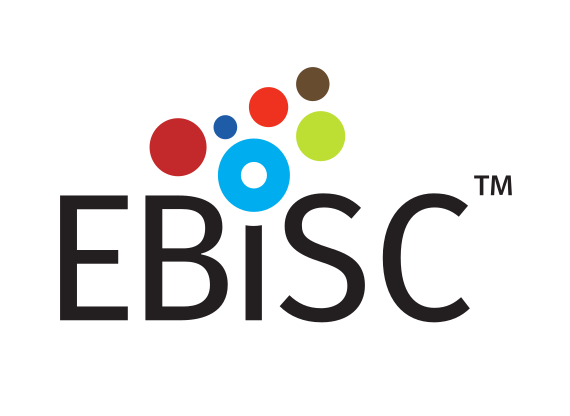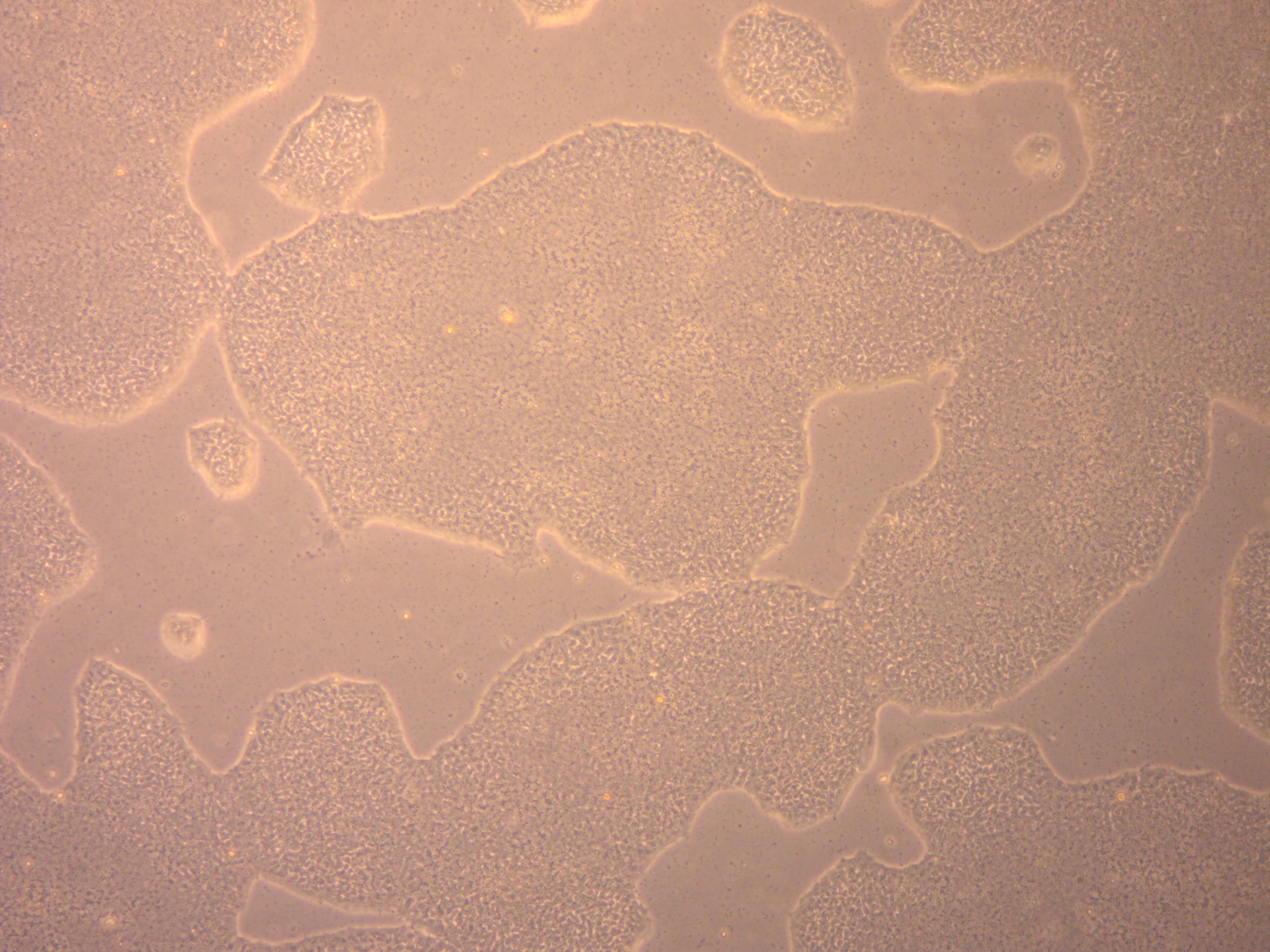If the cells you would like to access are currently listed as unavailable
or you are ordering from outside of Europe please get in touch via
Contact@EBiSC.org.
BIONi010-C-9
BIONi010-C CD33 KO
Gene-edited iPSC line
A CLIP contains information about a cell line including any
specific third party obligations relating to, for example,
licensing obligations or the donor consent which affect the
use of the cell line.
The EBiSC Access and Use Agreement must be completed along with an individual
Cell Line Information Pack for each line. Complete the EAUA and send to Contact@EBiSC.org
for countersignature. The EAUA must be fully signed before proceeding with your order.
A batch specific Certificate of Analysis will be available to
download once you receive your EBiSC iPSC line.
General#
Cell Line |
|
| hPSCreg name | BIONi010-C-9 |
| Alternative name(s) |
BIONi010-C CD33 KO
|
| Cell line type | Human induced pluripotent stem cell (hiPSC) |
| Similar lines |
BIONi010-C-5 (BIONi010-C CD33 E2del #N14 P26) BIONi010-C-3 (BIONi010-C ApoE KO #KO30 P30) BIONi010-C-25 (BIONi010-C heterozygous TREM2 KO) BIONi010-C-17 (BIONi010-C TREM2 KO) BIONi010-C (BIONi010-C, K3P53) BIONi010-C-2 (BIONi010-C ApoE E3/E3 #H8 P32) BIONi010-C-70 (BIONi010-C with an APOE 2/2 genotype with an additional, homozygous christchurch mutation) BIONi010-C-71 (BIONi010-C with an APOE 3/3 genotype with an additional, homozygous christchurch mutation) BIONi010-C-4 (BIONi010-C ApoE E4/E4 #B44 P27) BIONi010-C-6 (BIONi010-C ApoE E2/E2) BIONi010-C-7 (BIONi010-C Trem2 R47H) BIONi010-C-8 (BIONi010-C Trem2 T66M, #Y5-80) BIONi010-C-13 (BIONi010-C + NGN2 #I7-26) BIONi010-C-15 (BIONi010-C +dox inducible NGN2-GFP) BIONi010-C-18 (BIONi010-C TBK1 KO) BIONi010-C-51 (BIONi010-C TNNI3-mCherry reporter) BIONi010-C-19 (BIONi010-C IKBKE KO) BIONi010-C-10 (HNF1AP291fsinsC +/- 54-5) BIONi010-C-11 (HNF1AP291fsinsC -/- 66-1) BIONi010-C-12 (HNF4ApR309C -/- 2-4) BIONi010-C-52 (BIONi010-C with an APOE 2/2 genotype (with two functional alleles in contrast to BIONi010-C-6)) BIONi010-C-53 (BIONi010-C with an APOE 3/3 genotype (with two functional alleles in contrast to BIONi010-C-2)) BIONi010-C-55 (BIONi010-C TNNI3-mCherry/TNNI1-EGFP dual reporter cl. 74) BIONi010-C-24 (BIONi010-C Dox a-syn) BIONi010-A (K1P53) BIONi010-B (K2P53, BIONi010-B) |
| Notes | KO for CD33. No larger chromosomal aberrations to be reported. Chr22: 1,4Mbp duplication in q11.23 |
Provider |
|
| Depositor | Bioneer (BION) |
| Owner | Bioneer (BION) |
| Distributors |
EBiSC
|
| Derivation country | Denmark |
External Databases |
|
| hPSCreg | BIONi010-C-9 |
| BioSamples | SAMEA4454012 |
| Cellosaurus | CVCL_LL40 |
| Wikidata | Q54796783 |
General Information |
|
| Publications | View all related publications on hPSCreg (2) |
| This EBiSC line can be used for: |
Yes
Research use: allowed
Clinical use: no
Commercial use: no
|
| Subclone of | |
Donor Information#
General Donor Information |
|
| Sex | male |
| Ethnicity | Black or African-American |
Phenotype and Disease related information (Donor) |
|
| Diseases | No disease was diagnosed.
|
| Disease associated phenotypes | no phenotypes |
Karyotyping (Donor) |
|
| Has the donor karyotype been analysed? |
Unknown
|
Other Genotyping (Donor) |
|
| Is there genome-wide genotyping or functional data available? |
No
|
Donor Relations |
|
| Other cell lines of this donor | |
External Databases (Donor) |
|
| BioSamples | SAMEA3105780 |
hIPSC Derivation#
General |
|
|
The source cell information can be found in the parental cell line
BIONi010-C.
|
|
Reprogramming method |
|
| Vector type | Non-integrating |
| Vector | Episomal |
| Genes | |
| Is reprogramming vector detectable? |
No |
Vector free reprogramming |
|
Other |
|
| Derived under xeno-free conditions |
No |
| Derived under GMP? |
No |
| Available as clinical grade? |
No |
Culture Conditions#
Latest released batch |
|
| Culture medium | Essential E8 |
| Passage method | EDTA |
| Surface coating | Matrigel / Geltrex |
| O2 concentration | 18 |
| CO2 concentration | 5 |
| Temperature | 38 |
The following are the depositor culture conditions, they do not refer to any specific batch.
| Surface coating | Matrigel/Geltrex |
| Feeder cells |
No |
| Passage method |
Enzyme-free cell dissociation
EDTA
|
| O2 Concentration | 18 % |
| CO2 Concentration | 5 % |
| Medium |
Essential 8™
|
| Has Rock inhibitor (Y27632) been used at passage previously with this cell line? | Yes |
| Has Rock inhibitor (Y27632) been used at cryo previously with this cell line? | No |
| Has Rock inhibitor (Y27632) been used at thaw previously with this cell line? | No |
Characterisation#
Analysis of Undifferentiated Cells
| Marker | Present | Absent |
| mCpG | ||
| OCT4 |
Morphology pictures
Differentiation Potency
Microbiology / Virus Screening |
|
| HIV 1 | Negative |
| HIV 2 | Negative |
| Hepatitis B | Negative |
| Hepatitis C | Negative |
| Mycoplasma | Negative |
Genotyping#
Karyotyping (Cell Line) |
|
| Has the cell line karyotype been analysed? |
Yes
|
Other Genotyping (Cell Line) |
|
| Is there genome-wide genotyping or functional data available? |
Yes
Whole genome sequencing
https://ega-archive.org/studies/EGAS00001002755 This cell line has undergone WGS using the Illumina HiSeq X platform at 30x coverage. Fastq files are stored at the European Genome Archive, users can apply for access to this data by submitting an application form to the EBiSC Data Access Committee https://ega-archive.org/dacs/EGAC00001000768 |
Genetic Modification#
| Disease/phenotype related modifications |
|


